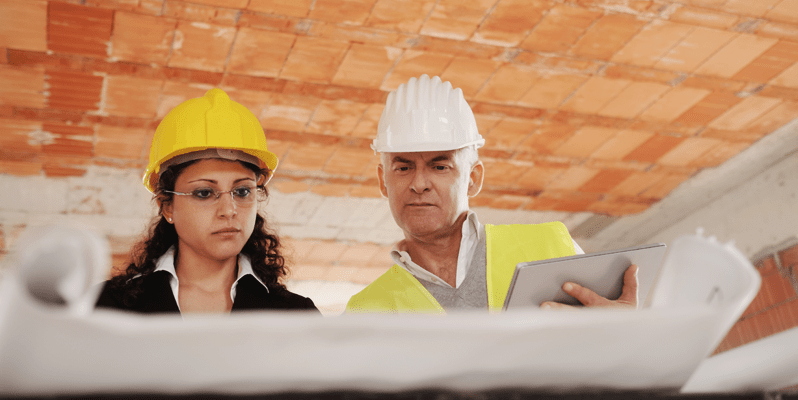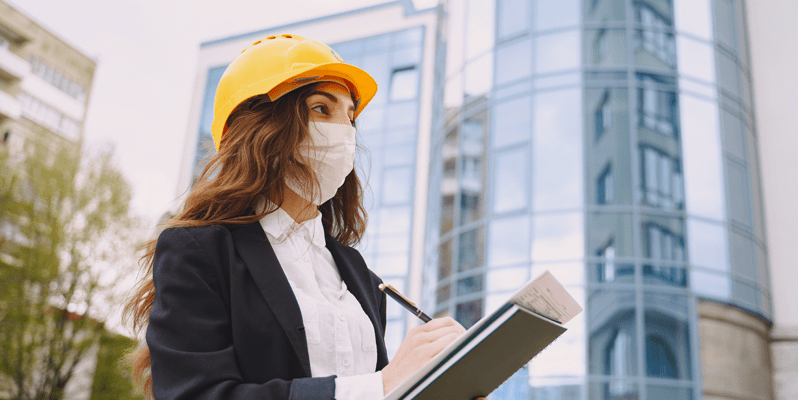
Constant trend developments mean industries are always changing the ways they operate, with building and construction being one of the most adaptable and resilient industries in Australia. In 2021, we can start to look beyond the initial impact of COVID-19 and find out what lies ahead for this industry.
We outline the core building and construction trends for 2021 below:
Be prepared for new technology
Technology is an influential part of any construction project. Improved technology can assist with speed, efficiency, workload and accuracy. Those who do not adapt to advancements can become uncompetitive in the marketplace. As a result, building and construction companies need to keep themselves armed with the best equipment for the job.
One example is 3D printing, which has been used in construction for a few years now. In 2020 we saw a boom in the printing of materials like chipboard as an easy and cost-effective solution to production. Should this trend continue, it will impact the building and construction industry, in terms of where materials are sourced, the sustainability of materials used, as well as production cost. Investing in the machines that can create the product rather than having to buy the product itself may be a more cost-effective way to manufacture supplies.
The drive for women in construction
Currently, only 2% of the population of construction workers are women. The Victorian government is leading Australian policy by taking steps to increase women’s representation in building and construction. The ‘Building Gender Equality: Victoria’s Women in Construction Strategy 2019-2022’ is overseen by The Building Industry Consultative Council (BICC). The BICC acts as a forum for dialogue between government, employers, industry associations and unions on significant issues affecting the building and construction industry. The Strategy was developed after extensive research and consultation with people in the construction industry, who are eager to contribute to the BICC’s initiative.
Along with government initiatives, there is a significant push from within the industry to focus on encouraging women to pursue a career in building and construction. The 2021 Sydney Build Expo has dedicated an entire panel to gender diversity, naming it the “Women in Construction Summit”. The panel agenda includes topics like:
- Empowering women in construction
- Building Women, not just Houses
- Breaking through the glass ceiling – how can women reach senior and board positions within the construction industry?
- Celebrating the success of women in construction
- How can we encourage young girls to consider a career in construction?
Summits like this inspire the confidence of women in the industry, as well as younger women who are considering starting their career path. These panels aim to encourage gender diversity within the industry and create an equal workplace for men and women.

Sustainability is smart and unavoidable
An increase in climate action sentiment in Australia is forcing companies to reconsider their practices in the workplace. Here are three easy ways to ensure you remain sustainable in building and construction.
Better waste management
Waste management is an unavoidable part of the building and construction industry. The good news is there are many simple changes companies can make to construction sites that will add a green light to operations.
The first of these is to segregate waste by implementing a dedicated waste section on-site with clearly labelled and colour-coded bins, skips or bags. Training staff and contractors to use the system is the next step. A team that knows how to manage waste effectively will save costs for those projects that are currently hiring a specialised team to do this task.
Another waste management practice that has twofold positive effects is to deconstruct instead of demolishing. Demolition is a messy, polluting procedure that has far less long-term gain than precise deconstruction. Deconstruction allows for a safe environment and a high potential to reuse or sell recycled materials in the process.
Renewable and efficient energy use
2021 will be a big year for renewable and efficient energy use within houses. The Victorian Government recently announced new minimum energy efficiency standards for rental properties. Along with this announcement, there is a $797 million clean power package included in the recent budget. Half of this money is dedicated to replacing old heaters with energy-efficient units.
Source sustainable materials
Sourcing sustainable materials is an easy way to keep a construction site on an ethical footing for only a small increase in cost. Be sure to research and support businesses who are not causing deforestation and are reducing emissions. As mentioned above, reusing materials is another effective way to resource sustainably.
The good news Federal budget
Due to the effects of COVID-19, the 2020 budget looked very different from what anyone had been anticipating, but that doesn’t mean it was necessarily bad news.
As of October 2020, the unemployment rate had risen to 7% or 960,900 people. As a result, the government included a $74 billion JobMaker plan to the budget. The scheme provides business with the funds to hire new staff, with the goal to boost employment, encourage a stronger economy, reduce the financial strain on businesses, and much more.
Along with JobMaker, the government announced an additional $14 billion over the next four years to support new and accelerated infrastructure projects. It is the governments hope that this will lead the way in creating 40,000 jobs during the construction of these projects. This initiative is part of a 10-year transport infrastructure investment that has increased to $110 billion.
Residential construction will also benefit from the recent budget announcements. The main benefits include:
- The creation of a tax-free grant worth $25,000 for eligible owner-occupiers looking to build a new home
- 10,000 additional places added to the First Home Loan Deposit Scheme for first home buyers looking to build or buy a newly built home
- The effects of these measures are estimated to generate over $1.5 billion in economic activity
The Reserve Bank of Australia has also announced that they are keeping already historically low-interest rates on hold for three years, meaning there is likely to be more demand for affordable housing or house and land packages
What can you take from these 2021 trends?
While 2020 was not the year any of us expected, there is good news ahead as we move into 2021. Due to delays caused by the outbreak of COVID-19, there will be increased demand for works that were put on hold to resume again. From this, we can expect new jobs to be created.
Not only that, but we are likely to see more innovative ways to work and new design elements. Whether it’s new ways to incorporate materials or the importance of sustainability within the industry, these changes are optimistic as we move forward. For women looking to get into the industry, the time has never been better with a continued focus on encouraging diversity.
With an emphasis still on attracting young people into the industry, now is an exciting time to be a young Australian who is interested in building and construction. Likewise, the need for project managers and good communicators makes this industry a smart choice for the career savvy professional looking to make a change. An online Diploma of Building and Construction (Management) (CPC50308) is the best place to start. Do you want to learn more about construction management skills employees demand, the latest emerging job roles and salaries, and recent industry insights? Discover your career in construction management.
Your Career in Construction Management
